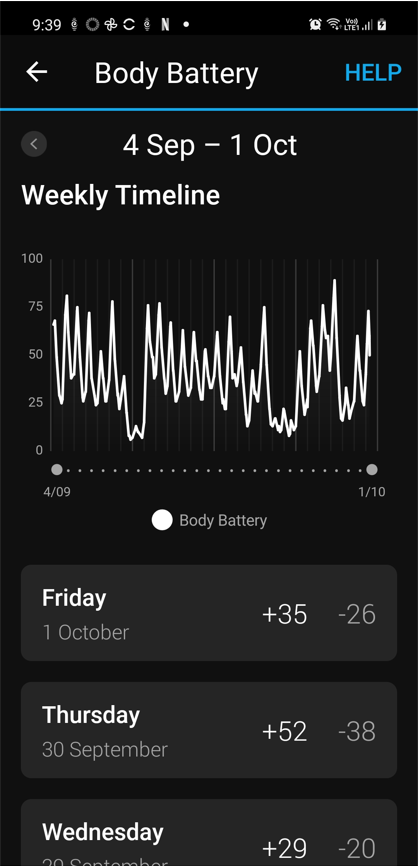What is Pacing?
Pacing is learning to avoid doing something too quickly or doing too much at one time, so that you have enough energy left to complete an activity and then, giving yourself enough rest to regain the energy expended. It is both a science and an art.

Planning activities in advance

Taking regular rest breaks

Choosing activities based on available energy

Prioritizing activities
Many analogies have been developed to illustrate the concept, with names such as staying within one’s Energy Envelope, broken battery, energy dollars, spoon theory, and more. The essence of them all is that you have a limited amount of energy, and you have to be careful how you spend.
It means breaking up your day into (very) short periods of activity with (lots of) rest in between. It means prioritising important activities and dropping less important ones. It means finding energy-efficient ways of doing the things you have to – or want to – do. And it means stopping before you reach your energy limit. It also can mean asking other people to do things for you.
Common symptoms of indicating the need for pacing include:
The level of fatigue may be out of proportion to the level of activity
There is a change in the quality of movement, such as jerkiness and tremor
You start to use compensatory motions such as “hunching” your shoulder when raising your arm or swinging your leg out to the side instead of flexing at the hip
Repeating a boom and bust pattern
Underestimating the time it will take to do something and then not stopping till you are finished
Reduced motivation or energy
Increased errors or accidents
Changes in Rest and Pacing
The Late Effects of Polio are experienced as a change in our ability to carry on as normal. This is often felt as an increase in fatigue and/or pain and reduced mobility and physical capability, imposing new limits on our lives.
Each person’s limits are different, just as each person’s life circumstances are different. Knowing our limits is an important part of managing fatigue and well-being.
It is not only physical activities that drain our energy. Concentrating harder doing mental tasks and dealing with everyday stresses also uses energy. Energy can be recharged by rest, relaxation and pleasant emotions. Emotions such as frustration, anger and resentment can use up a lot of valuable energy.
Planning ahead requires us to think not only about the things we need but the time it will take and the energy it will consume. Prioritizing our needs will mean the most important things get done.
Nothing ever works out exactly as planned and often things take longer than expected, therefore not everything gets done. If we accept this as normal then we shouldn’t worry about it, just re-calibrate our estimations so that we don’t overestimate what we can actually do without exhausting ourselves.
Here are four of many reasons why people who had polio may have trouble pacing themselves.

What can I do to improve my pacing?
Here are some key principles:
Allow plenty of time to do a task and be prepared to take a break or breaks during the task. Frequent short rests can be more beneficial than a longer single break.
Plan activities for the time of day when you have the most energy and the energy suits the activity.
Build space between tasks for rest and other quiet activities.
Plan the week ahead so there is enough space to rest and recover between tasks, appointments and social engagements as the effects of activities can add up.
Plan pleasurable actives as this leads to positive emothions.
Ask yourself, do you need to do this task or would somebody else be happy to do it? If the answer is no to both, don’t do it and forget it. Follow the 3Ds -Do it, Dump it or Delegate it.
Social Effects of Pacing
Pacing is controlling your time so that you can meet your needs and desires, as only you know how. After a lifetime of ignoring our bodies tiredness and stress signals, pacing means these have to be listened to and acted on. In social situations you will have to feel comfortable in getting your needs met. In the past we may have avoided situations rather than ask for help or special attention. Remember other people can’t guess your needs so expect to have to spell them out.
Some of the people in your life may be unsupportive and not (want to) understand what it is like to love with the late effects of polio, which can be a major source of stress, for all concerned. Remember that this isn’t about you; it’s about their own attitudes and insecurities.
One strategy is to gently but firmly state your specific practical needs for a specific occasion. No lengthy explanations or entering into a discussion about it, just a short “I need to put my feet up” or “No, though thanks very much for asking”, for example. It’s up to the other person to respect that.
If you do this consistently many people will respond positively, eventually. If they don’t, and it’s causing you too much stress, you may have to make the hard choice to minimise contact with that person if you can.
Talking to others who have consciously started pacing is well worth it for support and encouragement.
Ongoing worry about pacing
It can be hard to not the feel that doing nothing is a waste of our precious time on earth or that, unless we have done something, we are letting people down.
Resting is not doing nothing- rather it is finding the things that recharge and restore us and making an art of it. The art of the power nap is based on good science, but power napping is a skill not a prescription.
Pacing is about balancing all our activities, both energetic and restorative, so that we can maintain a healthy body energy level and avoid fatigue.
Monitoring Your Pacing
A wide variety of sleep and activity trackers that you can strap to your wrist have hit the market. Those that measure your body battery combine all the indicators into one scale showing how much overall energy you use and store when sleeping and during the day. This can be a learning tool for those that can work out the connection between what they do and feel and the level of the body battery.
The graph opposite, using a Garmin Vivoactive 4 watch body battery function, indicates a boom and bust pattern of a person living with the late effects of polio.

Find out more
Resources, Links and Research Downloads
Polio, Pacing and Prioritising
Q: What are the fundamental self-care guidelines that conserve physical energy and avoid fatigue.
W: LIGHTEN UP – the low down on Rest, Pacing, and Timing.
A: Written by Polio survivors – well worth a read
